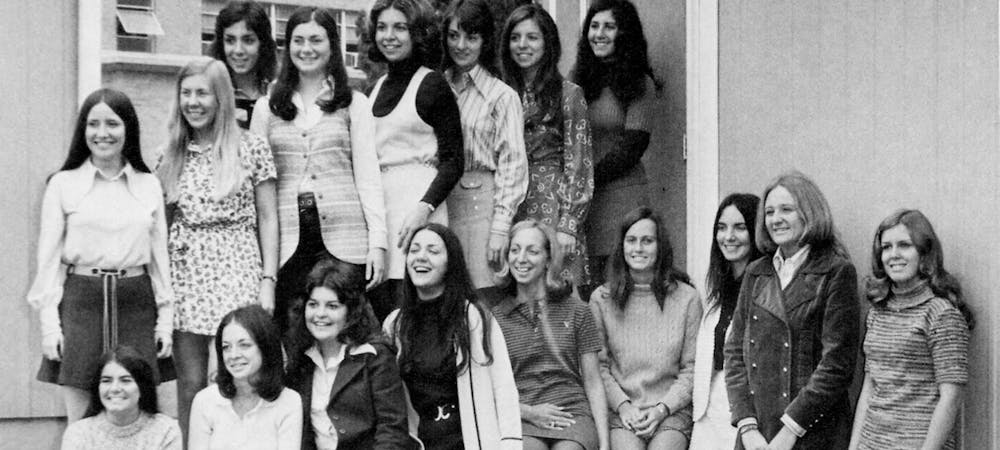In 1968, Seton Hall University’s demographics shifted in a major way.
In this year, for the first time in the institution’s history, women were allowed to enroll at SHU. They joined male students in attending classes, participating in extracurriculars, and contributing to the betterment of the college.
Reactions to this change were mixed. Students who were surveyed in a Feb. 7, 1968 article of the Setonian by Bob Podestinski and Michael Horgan described their feelings as including “pleased,” “happy,” “disappointed,” “indifferent,” and even “messy.” However, the new female students at Seton Hall made it known that they were there to stay, taking leadership positions on campus within their first year of attending. This, of course, includes the Setonian; trailblazing women took on all sorts of positions on staff – reporting, editing, and everything in between.
As the Setonian nears its 100th anniversary, we look back and commemorate these women for doing something that, for their time, may have turned some heads or even encouraged backlash; however, they pushed through any barriers they may have encountered and assisted Seton Hall’s newspaper in enduring until 2024.

Some of the Setonian's first female writers and leaders. On the far right is Mary Dougal.
Photos via Galleon 1975, 1969, 1975 and 1970 respectively.
Louise Alifano was one of the first women to join the paper. She served as executive assistant sporadically throughout 1968 and 1969. In this position, she most likely acted as the backbone for the editorial board at the time. Her duties included fielding phone calls and relaying messages as needed, proofreading and editing articles, ensuring each edition was published on time and overseeing the day-to-day operations of the executive office. She graduated with a degree in elementary education in 1969.
Mary Dougal acted as a features editor for the Setonian in 1970. Besides selecting the topics to write on for the section, as well as editing and revising the Features articles that were produced, Dougal would have decided on themes and specially-coordinated articles, fact-checked them, and provided guidance and feedback to her reporters.
Theresa “Terry” Garrigal and Catherine "Cathy" McKenna worked alongside one another in 1974 as managing editor and business manager, respectively. As Managing Editor, Garrigal would have worked very closely with the editor-in-chief in reviewing the Setonian’s content. She would also assign stories to reporters, review and fact-check articles as needed. The managing portion would come in when setting deadlines for the reporters, recruiting new writers, and supervising the day-to-day activities in the newsroom. McKenna’s duties as business manager would vary slightly; instead of focusing on articles, she may have instead developed a budget for the newspaper, supervised the printing and delivery of the Setonian, acted as a point of contact between the staff and the printer and made sure that the paper contained articles that were accurate, grammatically proper and had good content. Garrigal and McKenna both graduated in 1975 with bachelors degrees in education and nursing, respectively.
During the research process for this article, it became clear that the female-dominated majors when Seton Hall first became co-ed were education, nursing and (to a lesser extent) English. Seton Hall is now 54% female-identifying students, a majority; and they can be found in every major and discipline the university has to offer.
In celebrating the 100th year of the Setonian, we must not forget to commemorate these trailblazing women who contributed so much to Seton Hall’s newspaper nearly from the moment they were allowed to attend the institution. Their efforts have laid the foundation for the Setonian as we know it today, and the passion they had for it will enable this newspaper to last for years to come.
Gianna Terrarosa is a writer for the Setonian’s Campus Life section. She can be reached at gianna.terrarosa@student.shu.edu.





